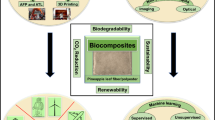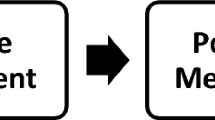Abstract
Graded structure design based on triply periodic minimal surface (TPMS) structures can effectively improve the stiffness of lightweight structures. To further improve the structural stiffness of these lattice structures, a novel optimization method combing performance characteristics of various morphology lattice structures is proposed. First, a discrete homogenization method based on the ABAQUS software is proposed to rapidly obtain the effective elastic properties of the TPMS structures. Then the effective elastic properties of three typical types of TPMS (iWp [W], IW, and primitive [P]) structures are studied for later design optimization. The size effect of TPMS structures is also studied, and the validity of effective compression modulus of three TPMS structures is verified by experiments. Third, density mapping, based on topology optimization (TO), and interpolation approaches are used to obtain the optimized lattice structure with a density gradient. The selective filling function of unit cells is given to obtain a suitable cell topology distribution across the design space. Finally, the effectiveness of the optimized results is verified by finite element analysis (FEA) and experiments.


















Similar content being viewed by others
References
Orme ME et al (2017) Designing for additive manufacturing: lightweighting through topology optimization enables lunar spacecraft. J Mech Design 139:(10090510)
Hassani B, Hinton E (1998) A review of homogenization and topology optimization. III. Topology optimization using optimality criteria. Comput Struct 69(6):739–756
Michielsen K, Kole JS (2003) Photonic band gaps in materials with triply periodic surfaces and related tubular structures. Physical review B, Condensed matter and materials physics 68(11):art-115107
MFA LJG (1997) Cellular solids: structure and properties. In: Cambridge. Cambridge University Press, UK
Takezawa A, Kobashi M, Koizumi Y, Kitamura M (2017) Porous metal produced by selective laser melting with effective isotropic thermal conductivity close to the Hashin–Shtrikman bound. Int J Heat Mass Transf 105:564–572
Leary M, Mazur M, Elambasseril J, McMillan M, Chirent T, Sun Y, Qian M, Easton M, Brandt M (2016) Selective laser melting (SLM) of AlSi12Mg lattice structures. Mater Des 98:344–357
Mazur M et al (2016) Deformation and failure behaviour of Ti-6Al-4V lattice structures manufactured by selective laser melting (SLM). Int J Adv Manuf Technol 84(5):1391–1411
Al-Ketan O et al (2018) Microarchitected stretching-dominated mechanical metamaterials with minimal surface topologies. Adv Eng Mater:20(18000299)
Dong G, Tang Y, Zhao YF (2017) A survey of modeling of lattice structures fabricated by additive manufacturing. J Mech Design 139:(10090610)
Zheng X, Fu Z, du K, Wang C, Yi Y (2018) Minimal surface designs for porous materials: from microstructures to mechanical properties. J Mater Sci 53(14):10194–10208
Arabnejad S, Pasini D (2013) Mechanical properties of lattice materials via asymptotic homogenization and comparison with alternative homogenization methods. Int J Mech Sci 77:249–262
Andreassen E, Andreasen CS (2014) How to determine composite material properties using numerical homogenization. Comput Mater Sci 83:488–495
Yi S, Cheng G, Xu L (2016) Stiffness design of heterogeneous periodic beam by topology optimization with integration of commercial software. Comput Struct 172:71–80
Surjadi JU et al (2018) Mechanical metamaterials and their engineering applications. Adv Eng Mater 21(3):1800864
Tamburrino F, Graziosi S, Bordegoni M (2018) The design process of additively manufactured mesoscale lattice structures: a review. J Comput Inf Sci Eng 18:(0408014)
Wang S, Zheng Z, Zhu C, Ding Y, Yu J (2018) Crushing and densification of rapid prototyping polylactide foam: meso-structural effect and a statistical constitutive model. Mech Mater 127:65–76
Salonitis K, Chantzis D, Kappatos V (2017) A hybrid finite element analysis and evolutionary computation method for the design of lightweight lattice components with optimized strut diameter. Int J Adv Manuf Technol 90(9-12):2689–2701
Pham M et al (2019) Damage-tolerant architected materials inspired by crystal microstructure. Nature 565(7739):305–311
Alberdi R, Dingreville R, Robbins J, Walsh T, White BC, Jared B, Boyce BL (2020) Multi-morphology lattices lead to improved plastic energy absorption. Mater Des 194:108883
Kang D, Park S, Son Y, Yeon S, Kim SH, Kim I (2019) Multi-lattice inner structures for high-strength and light-weight in metal selective laser melting process. Mater Des 175:107786
Yoo D, Kim K (2015) An advanced multi-morphology porous scaffold design method using volumetric distance field and beta growth function. Int J Precis Eng Manuf 16(9):2021–2032
Yang N, Tian Y, Zhang D (2015) Novel real function based method to construct heterogeneous porous scaffolds and additive manufacturing for use in medical engineering. Med Eng Phys 37(11):1037–1046
Maskery I, Aremu AO, Parry L, Wildman RD, Tuck CJ, Ashcroft IA (2018) Effective design and simulation of surface-based lattice structures featuring volume fraction and cell type grading. Mater Des 155:220–232
Cheng L, Bai J, A.C. To (2019) Functionally graded lattice structure topology optimization for the design of additive manufactured components with stress constraints. Comput Methods Appl Mech Eng 344:334–359
Panesar A, Abdi M, Hickman D, Ashcroft I (2018) Strategies for functionally graded lattice structures derived using topology optimization for additive manufacturing. Additive Manufacturing 19:81–94
Wang Y, Zhang L, Daynes S, Zhang H, Feih S, Wang MY (2018) Design of graded lattice structure with optimized mesostructures for additive manufacturing. Mater Des 142:114–123
Yildiz BS, Yildiz AR (2018) Comparison of grey wolf, whale, water cycle, ant lion and sine-cosine algorithms for the optimization of a vehicle engine connecting rod. Materials Testing 60(3):311–315
Aslan B, Yildiz AR (2020) Optimum design of automobile components using lattice structures for additive manufacturing. Materials Testing 52:633–639
Xu L, Cheng G (2018) Two-scale concurrent topology optimization with multiple micro materials based on principal stress orientation. Struct Multidiscip Optim 57(5):2093–2107
Liu Y, Zhuo S, Xiao Y, Zheng G, Dong G, Zhao YF (2020) Rapid modeling and design optimization of multi-topology lattice structure based on unit-cell library. J Mech Des 142:091705
Shi X, Liao W, Li P, Zhang C, Liu T, Wang C, Wu J (2020) Comparison of compression performance and energy absorption of lattice structures fabricated by selective laser melting. Adv Eng Mater:2000453
Tang Y, Zhao YF (2016) A survey of the design methods for additive manufacturing to improve functional performance. Rapid Prototyp J 22(3):569–590
Yang N, Quan Z, Zhang D, Tian Y (2014) Multi-morphology transition hybridization CAD design of minimal surface porous structures for use in tissue engineering. Comput Aided Des 56:11–21
Li S, Wongsto A (2004) Unit cells for micromechanical analyses of particle-reinforced composites. Mech Mater 36(7):543–572
LI S (2008) Boundary conditions for unit cells from periodic microstructures and their implications. Compos Sci Technol 68(9):1962–1974
Li D et al (2019) Design and optimization of graded cellular structures with triply periodic level surface-based topological shapes. J Mech Des 141:(0714027)
Onck PR, Andrews EW, Gibson LJ (2001) Size effects in ductile cellular solids. Part I: modeling. Int J Mech Sci 43(3):681–699
Andrews EW, Gioux G, Onck P, Gibson LJ (2001) Size effects in ductile cellular solids. Part II: experimental results. Int J Mech Sci 43(3):701–713
Andreassen E, Clausen A, Schevenels M, Lazarov BS, Sigmund O (2011) Efficient topology optimization in MATLAB using 88 lines of code. Struct Multidiscip Optim 43(1):1–16
Acknowledgements
This work was supported by the National Key R&D Program of China (No. 2017YFB1103000) and Scientific Research Program of the Shanghai Science and Technology Committee (18DZ2204300).
Availability of data and materials
The datasets used during the current study are available from the corresponding author on reasonable request.
Code availability
The code used during the current study (including how to rapidly obtain the effective modulus of the unit cell and how to fill the unit cell) is available from the corresponding author on reasonable request.
Funding
This work was supported by the Ministry of Science and Technology of the People’s Republic of China (number: 2017YFB1103000, recipient: Wenhe Liao) and Scientific Research Program of the Shanghai Science and Technology Committee (number: 18DZ2204300).
Author information
Authors and Affiliations
Contributions
Wenhe Liao, Tingting Liu, Changdong Zhang, and Dawei Li contributed to the conception of the study; Xin Shi, Cong Wang, and Fangxi Ren performed the experiments; Weiming Jiang contributed to realize the optimization process; and Xin Shi performed the data analyses and wrote the manuscript.
Corresponding authors
Ethics declarations
Ethical approval
Not applicable.
Consent to participate
Not applicable.
Consent for publication
The author agrees to publication in the Journal “Advanced Manufacturing Technology.”
Conflict of interest
The authors declare no competing interests.
Additional information
Publisher’s note
Springer Nature remains neutral with regard to jurisdictional claims in published maps and institutional affiliations.
Rights and permissions
About this article
Cite this article
Shi, X., Liao, W., Liu, T. et al. Design optimization of multimorphology surface-based lattice structures with density gradients. Int J Adv Manuf Technol 117, 2013–2028 (2021). https://doi.org/10.1007/s00170-021-07175-3
Received:
Accepted:
Published:
Issue Date:
DOI: https://doi.org/10.1007/s00170-021-07175-3




